Integrating Humanitarian Mine Action and Humanitarian Forensic Action
By Lauren Cobham, Nicholas Márquez-Grant, Caroline Barker, César Sanabria Medina, Javier Naranjo-Santana, Gareth Collett, and Mike Harris
CISR JournalThis article is brought to you by the Center for International Stabilization and Recovery (CISR) from issue 25.3 of The Journal of Conventional Weapons Destruction available on the JMU Scholarly Commons and Issuu.com.
Humanitarian mine action (HMA) and humanitarian forensic action (HFA) have had a global impact in recent decades. However, these two areas could work more closely together in view of some of the contexts in which they operate. Often when HMA operators clear explosive ordnance (EO) after conflict, they find human remains, especially in urban areas. When human remains are encountered, operators have responsibilities to ensure that they are dealt with appropriately. When human remains are encountered, they must be dealt with appropriately. In the event that HMA and HFA actors are present in a humanitarian arena, there is a need for an increased awareness and understanding of each other’s role. Similarly, forensic scientists working to recover human remains may encounter mines, improvised explosive devices (IEDs), or explosive remnants of war (ERW), and they should also actively enable HMA support.. This article examines the extent of the cooperation to date and identifies ways in which it can be improved. Recommendations and practical measures are provided to encourage a higher degree of collaboration going forward.
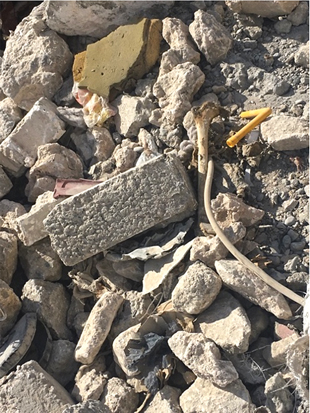
Civilian-led mine action developed in the late 1980s.1 The term humanitarian mine action (HMA) emerged when the removal of explosive threats in post-conflict contexts became necessary to protect people facing indiscriminate harm, support survivors, and restore basic services.2 As a recognized protection activity under the international humanitarian coordination (cluster) system,3 HMA has its own international standards for clearing EO for humanitarian purposes,4 including devices such as IEDs and booby-traps.5,6 Regulated by international normative agreements and international humanitarian law (IHL), HMA actors also assist states committed to certain international conventions.
Forensic archaeologists and anthropologists have been working since the 1980s to search, recover, and identify human remains from conflict zones.9,10,11,12 It is humanitarian forensic action (HFA) or forensic humanitarianism,13 that involves the use of forensic science for the recovery and identification of the deceased for humanitarian reasons, rather than for criminal investigations. Coined by the International Committee of the Red Cross (ICRC) to separate the humanitarian characteristics of forensic science,14 HFA originated from its use in the field of human rights and expanded globally in managing the dead during and following conflict.15 As a frontline response, HFA has the ameliorative intentions16 of ‘protecting the dignity of the dead,’17 and recovering and identifying the dead to support families awaiting news of their missing relatives.
Under IHL,18 HFA aims to uphold the dignity of the deceased, the right to memorialization, commemoration and reparations, the right to know, and the right to inform families.19 In practical terms, it involves searching and identifying human remains for humanitarian purposes and returning the dead to living relatives where possible.20 Associated forensic evidence also generates “proof of death” and death certification that can be critical for the living and surviving families.21,22
HMA and HFA adhere to the same humanitarian principles and have common goals rooted in IHL,23 yet neither are without controversy nor opposing views of the impact of their interventions.24 Assurances of neutrality are vital for HMA operators to gain access to areas for clearance. Similarly, the neutrality of humanitarian action towards the dead and when using forensic science for the purpose of establishing identification is critical for HFA. Humanitarian principles should be applied without adverse distinction and regardless of political or any other opinion.25 This is not always appreciated by some parties to conflict which can hamper both HMA and HFA activities.
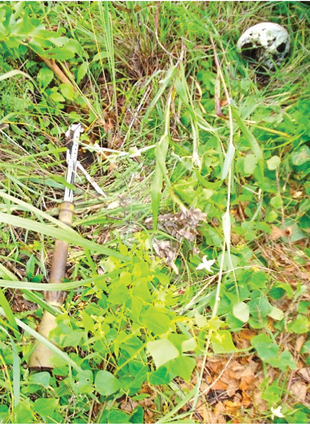
HFA operations have ranged from the excavation of mass graves and analysis of human remains in countries such as Bosnia and Herzegovina, Kosovo, Colombia, Cambodia, Rwanda, Sri Lanka, and Iraq. During these missions, forensic specialists have encountered explosive devices. Likewise, human remains have invariably been found over the course of HMA operations in these same countries. There are two main scenarios where EO and human remains coexist:
Surface and/or rubble buried human remains. See figures 1 and 2, where human remains are evident during conflict, and EO is present alongside the bodies of civilians and/or combatants. In some cases, bodies found in building destruction may be wearing suicide vests, be carrying EO such as hand grenades, or be pierced with unexploded ordnance (UXO) such as rocket-propelled grenades.
Buried human remains. On these occasions, mass graves may be in minefields and/or may contain booby-traps. Unstable EO may have also been buried with the deceased.
The increased use of IEDs in open areas and urban spaces have added new challenges since 2010.26,27 IEDs have been used to target first responders28,29 and humanitarian actors have been faced with a wider range of EO. For HMA, certain IEDs arguably present a higher risk, along with the presence of human remains and all the safety risks and ethical considerations this entails. For HFA, the presence of EO poses a clear threat to life and prevents access for the safe and appropriate recovery of the dead. Also, human remains often need to be recovered quickly, not only for reasons of dignity, but to adhere to cultural norms and to maintain relations with the local community. Human remains discovered in the ground or rubble, or in individual or mass graves, can represent men, women, and/or children, and both civilians and/or combatants from either side of a conflict. The perception that human remains may belong to a perpetrator of the conflict30 may adversely affect the management of the dead (Figure 3).31
Often, both sectors must find solutions to work around these challenges (Figure 4). There is a clear rationale for HMA and HFA to collaborate more broadly to better prepare for the operational environments encountered today.32 Within the context of international law frameworks33 this may also be viewed as an obligation for national governments that HMA and HFA seek to support.34
This paper seeks to present practical measures that can be taken in the short to medium term to bridge the perceived application gap between the two disciplines of HMA and HFA. Broader discussion on competing objectives and obligations35 can help in framing the debate under the guiding humanitarian principle of “do no harm”,36 and integrated and multidisciplinary approaches are needed for where EO is encountered alongside, and in conjunction with, human remains
HMA and HFA Operations
Post-conflict humanitarian action37 covers a spectrum of involvement from a range of different actors.38 HFA and HMA areas of work intersect at the operational level. This occurs when HMA operators are asked to provide technical support for HFA teams due to the perceived or known threat of EO,39 or when human remains are incidentally found during HMA operations and HFA support is required.40 In both these scenarios, once all safety considerations have been taken into account, the appropriate management of the dead is the main challenge. HMA requires assistance to remove human remains and avoid associated operational disruptions. While the aim for HFA is the identification of the dead and return of the remains to relatives where possible, the right circumstances are necessary for the effective management of the dead and the recovery of forensic evidence and/or DNA sampling for human identification. This begins at the scene, which is where HMA and HFA must interact.
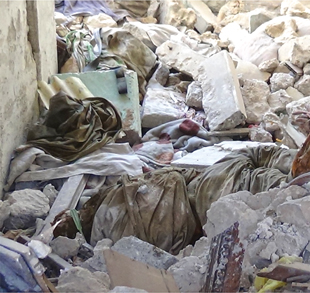
The precedent for collaboration between HMA and HFA exists. Over the decades, explosive ordnance disposal (EOD) support has been provided to assist the excavation and recovery of human remains, or to clear areas for HFA operations to take place. Examples include Kosovo, Cyprus, Iraq, Colombia, and recently the increased search for remains from the First and Second World War battlefields.41 During these operations, joint planning has minimized potential damage to human remains at the scene as well as the risk from EO for HFA teams, and multi-disciplinary expertise and integrated planning, however, are not routinely applied to support HMA operators when human remains are incidentally found. In this scenario, there is less precedence for cooperation, and requests for HFA support are often tied to the availability of funds, resources, and permissions from authorities and donors. The following provides an overview of some of these challenges:
- The discovery of human remains interrupts and/or halts clearance operations. If found at an operational site, HMA work is usually halted to prevent destruction of remains and evidence.42 Remains are reported to local authorities in the first instance, and operators demarcate the area and move on to another site until they are recovered to avoid disruptions to operations (Figure 4). Requirements for reporting are usually bound by national law. In post-conflict situations the availability of assistance from authorities is often limited. In Yemen for example, human remains are discovered on a regular basis during the clearance of EO from dwellings and public infrastructure, with minimal to no recovery by relevant authorities, which can impact HMA operations.
- Buildings may be unsound or the explosive contamination so great that access to human remains cannot be ensured in a timely fashion. This can be distressing for the local population. The use of IEDs in urban spaces—where there were human remains within and around homes and infrastructure in Yemen or in the urban rubble in Iraq (Figure 5)—presented unpredictable three-dimensional challenges for HMA operators43,44 and demanded a high level of technical competency to be able to operate effectively.45 These environments required HMA operators to draw on technological advancements and use specialized equipment where available,46 such as multi-sensor detectors, computed tomography (CT) imaging, and unmanned aerial vehicles (UAVs) to survey complex urban environments.
HMA operations should therefore be planned carefully, not only to confirm that the remains and immediate area are free from explosives (FFE), but to also ensure that contextual evidence is not destroyed so that the deceased can be recovered for identification and returned to relatives (Figure 6). Ensuring the minimal destruction of remains and evidence, and liaising with families and the local population, are issues that HFA assistance can help to address.
The effects of EO during HFA operations are similarly disruptive:
- Potential EO can delay human remains recovery efforts. HFA requires a safe environment for search, recording, recovery, and the tracking/maintenance of chain of custody to support further examination/analysis of human remains. If EO is suspected or EOD support is not available, HFA activities are delayed. In Colombia, there have been instances where it’s taken several weeks or months for explosive hazards at the scene to be addressed. Response times have depended on the location and access to the site.
- Risks and endangerment to personal safety. The search and excavation of human remains can be hazardous if EO is present at the scene. Examples include mass graves in Kosovo where the presence of hand grenades with corroded pins have been found interred with the human remains; depositions in mined areas and wells in abandoned farms and villages in Colombia, or mass grave sites located in minefields and alongside booby-trapped devices in Iraq. HFA personnel must be cognizant of the potential explosive hazards in their working environment, and they must have the assurance that recovered remains and items are FFE to ensure safety within the subsequent identification processes.
- First responders lack forensic expertise which can corrupt/compromise/lose contextual information relevant to establishing identification and/or inadvertently commingle remains. Ideally, remains are recovered by forensic scientists (such as forensic archaeologists or anthropologists) and taken to a mortuary alongside any clothing and personal effects for analysis and identification.47 The reality is that an effective and qualified response is often not immediately available, and first responders deal with the issue of human remains during which time important evidence for determining identity is lost. Self-help recovery operations by the local population may be undertaken, unaware of the circumstances needed for effective recovery, or first responders may attempt to preserve graves/human remains or place remains out of the context in which they are found, risking their misidentifications or incomplete recovery. Recoveries by non-experts can also result in the commingling of bones from several individuals, which may hinder identification.
Human Remains and HMA Responsibilities
Can HMA actors discharge their humanitarian responsibilities when faced with human remains? HMA and HFA are intrinsically linked by IHL and other international laws/treaties, as well as to obligations and objectives to achieve “normalcy.” The clearance of EO allows people to return home, enables land rights, and permits land use linked to livelihoods, and the identification of the dead grants for remarriage, inheritance, and other rights such as reparation and closure.
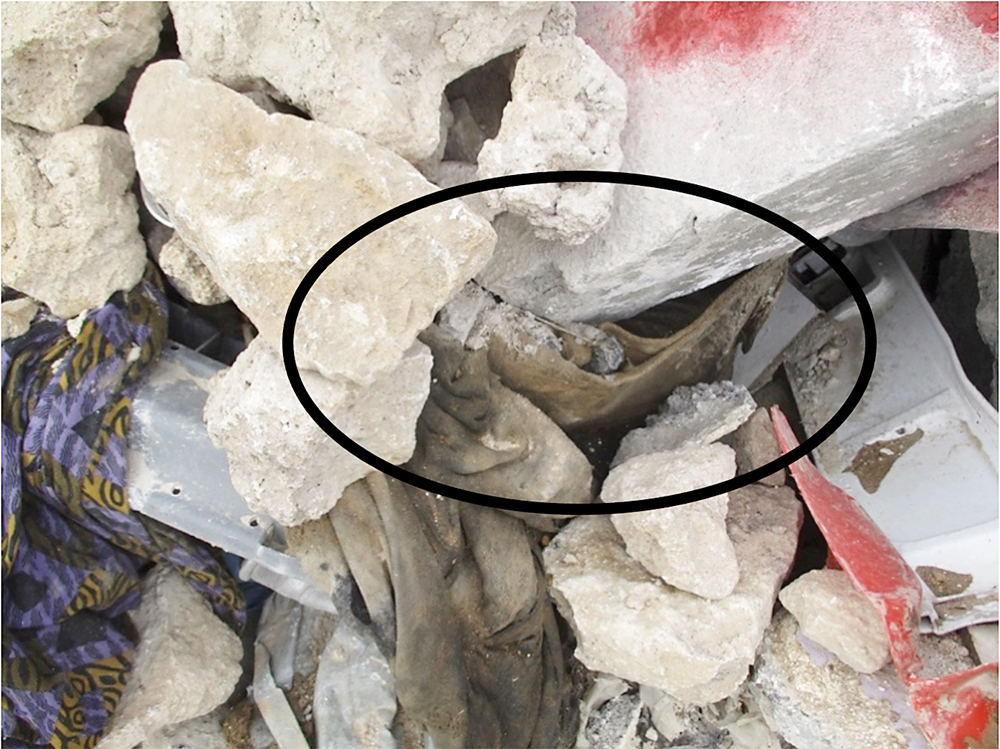
The challenges facing HMA requires HFA support. HMA operators must also be better informed and aware of their humanitarian responsibilities when encountering human remains in contexts where there is EO. As an often critical first line of response in post-conflict, HMA involvement with human remains may be unavoidable due to security, to resolve operational interruptions and maintain relations with communities, or when there is a time-lag before expert recovery is provided. Available guidelines for HMA on the management of human remains require an update,48 and while some standards exist for the handling of human remains, these are related to demining accidents and workplace incidents.50 Further details are necessary to assist HMA operators when human remains are found during routine operations and when incidents have occurred involving non-HMA personnel.
The opinion that the challenges for HMA are not enough to warrant specific guidance on the management of human remains in an operational environment illustrates the need for a better understanding and awareness of HFA. To its credit, this is being considered by a dedicated technical working group under the International Mine Action Standards (IMAS) Review Board.51 While HMA actors do not have technical competence or mandate to recover human remains, it will continue to find itself in situations where it must draw on HFA for support. Therefore, it is arguably the responsibility of the HFA community to raise awareness of IHL and concomitant obligations, and to advocate for the treatment/management of human remains with the HMA community, as opposed to HMA actors taking the lead.
Collaborating with HFA to develop and update operational guidance and standards will support and prepare HMA when there is minimal HFA assistance available. HFA must inform what is required from HMA to achieve these aims and ensure that HMA actors understand that the deceased and the “missing”53 should be identified, how the identification process works, and the necessary evidence needed to achieve this where possible. While the ICRC has taken steps to address this challenge, and HMA and HFA are working together in some contexts,54,55 this collaboration could be more broadly improved.
A Call for Multi-Disciplinary Operational Integration
HMA and HFA differ in terms of mandate; however, both have well established practices that aim to address similar problems for similar reasons.56 For instance, there is a close resemblance between HMA standard operating procedures (SOPs) and the high intensity survey standards required in forensic archaeology and anthropology recovery.57 Both HMA and HFA employ rigorous methods—on-site photography, examining witness accounts, documenting “finds,” identifying surface anomalies and topographic conditions, and using grid search and geospatial survey approaches.58 HMA operators are also increasingly using advanced technologies such as CT imaging and UAV footage in complex environments, and regularly create datasets and share information with other actors to support broader humanitarian responses. If this was extended to HFA teams, their operations would be better informed on the nature and context of a scene and subsequent human remains evidence and recovery strategies.
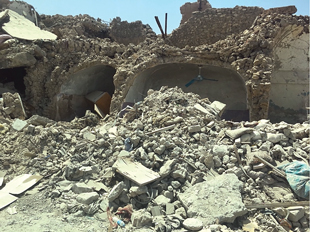
The development of joint guidance and basic training would enable HFA aims to be better understood and could be factored into a cooperative framework for HMA and HFA entities when working together. HFA should be a relevant stakeholder in HMA operations, and HMA should avoid a siloed approach.59 This would encourage the consideration of minimally destructive or alternate HMA clearance techniques in operational sites with human remains and to preserve evidence for identification and death certification. Furthermore, to achieve technical competency in contemporary conflicts, humanitarian actors need to adapt to the changing humanitarian environment.60 Documenting where and how human remains and EO have been found will ensure datasets and relevant distribution patterns are available to inform future humanitarian interventions.
Conclusion
The complexities associated with EO and human remains at the end of conflict are typical features of past, current, and future conflicts. Collaboration between HMA and HFA has been in practice for more than twenty years, however, given the current challenges facing HMA and HFA actors, it is necessary to explore how this can be built upon and applied routinely, particularly in complex urban spaces. As HMA is often in the lead in post-conflict humanitarian response, human remains will be invariably encountered. HMA actors should therefore know and be aware of their humanitarian responsibilities, and of HFA actors involved in managing the dead in conflict. To help ensure this, the following recommendations are put forward with practical measures that can be applied:
- HFA should take the advocacy lead and intensify the dialogue to ensure that the HMA sector understands the circumstances required to achieve its aims. HFA should be a stakeholder and raise awareness of IHL and concomitant obligations so that a humanitarian principled approach is factored into operational planning and preparation. The IMAS technical working group established to review technical guidance on the management of human remains would be a useful forum for HFA actors to participate and take on an advocacy lead.
- Routine, multi-disciplinary, and integrated planning should take place to address any perceived challenges associated with the discovery of human remains. A flexible guiding framework for HMA and HFA cooperation should be applied to suit the context and complement the capacities of relevant national stakeholders. When developing HMA clearance plans, operations managers should routinely assess whether there is a likelihood of encountering human remains. Where such a likelihood exists, simple contingency planning should take place as a norm.
- HMA and HFA should regularly share information, data, and new and emerging technologies for mutual benefit, understanding, and planning. An inventory of methods, techniques, and procedures would allow both sectors to draw on mutually beneficial resources and inform operational strategies. Sharing datasets and footage from UAVs and CTs would assist both sectors when operating in complex urban spaces.
- Referral systems/pathways for HMA and other humanitarian actors should be set up to access relevant HFA experts. Coordinated through the international humanitarian cluster system, referral systems could address operational interruptions associated with the incidental discovery of human remains for HMA and/or other actors involved in reconstruction efforts.
- Amplification of existing guidelines and recommendations issued by international organizations on managing the dead. Published literature such as the PAHO manual on the “Management of Dead Bodies after Disasters”61 which are designed for first responders, provides guidance on consequential, simple tasks ensuring the later recovery and identification of the deceased. Learning from case scenarios developed by HMA and HFA would also assist with this management.
- Basic training provisions for HMA and HFA actors. HMA should consider developing a basic human remains awareness course, integrating expertise from the HFA sector. This would equip HMA, as sometimes the first responders in conflict, with better HFA understanding. While ad hoc training for HFA teams in EO awareness occurs, it should be routinely applied so HFA teams are aware of HMA and the risks of EO.
HMA does not, and should not, work in a bubble. It is essential that, where cooperation with other disciplines is necessary to achieve humanitarian aims, HMA acts accordingly. In instances where human remains are found during operations, a better understanding of and increased cooperation with HFA is not only desirable but necessary. Where possible, methods and techniques should be combined in line with humanitarian principles. By improving cooperation, there is clear potential for HMA and HFA to improve operational outcomes while achieving the ultimate objectives of humanitarian action: to save lives, alleviate human suffering, and maintain human dignity during and in the aftermath of conflict. ◊
Acknowledgements. The authors would like to thank Roly Evans and Mark Wilkinson for their technical insight and comments.
 Lauren Cobham
Lauren Cobham
MSc Student
Cranfield University
Lauren Cobham is an MSc Forensic Archaeology and Anthropology student at Cranfield University, UK. Her research considers multidisciplinary responses in post conflict, with particular attention to the recovery of human remains. Prior to this she worked for the United Nations Mine Action Service and the Office of Rule of Law and Security Institutions in New York, Iraq, and Somalia. She has more than fifteen years of experience managing and coordinating humanitarian programs and has worked in various field locations with international nongovernmental organizations (NGOs), including the Mines Advisory Group. Cobham also has an MA in International Development and a BA in Social Anthropology.
 Nicholas Márquez-Grant, PhD
Nicholas Márquez-Grant, PhD
Senior Lecturer
Cranfield University
Nicholas Márquez-Grant, PhD, is a Senior Lecturer in Forensic Anthropology at Cranfield Forensic Institute, Cranfield University, UK. He is one of only a few Chartered Forensic Anthropologists in the UK. He has over twenty years of experience in the recovery and analysis of human remains from a variety of contexts dating from prehistory to the present day. He has experience working with human rights cases and for a number of high-profile police cases in the UK. Márquez-Grant has published extensively in the field of forensic archaeology and anthropology.
 Caroline Barker
Caroline Barker
Biomedical Science Research Group
School of Medicine, University Antonio Nariño
Caroline Barker is a forensic anthropologist and archaeologist with over twenty years’ experience in human rights investigations. She has worked for the United Nations, international organizations, and NGOs across a range of diverse contexts in the Balkans, Western Europe, Latin America, Asia, and Africa. Barker has developed and delivered capacity-building initiatives and led interdisciplinary forensic programs designed to promote accountability for international crimes.
 César Sanabria Medina, MSc, PhD
César Sanabria Medina, MSc, PhD
Biomedical Science Research Group
School of Medicine, University Antonio Nariño
César Sanabria Medina, MSc, PhD, is a Forensic Anthropologist and lecturer at the University of Antonio Nariño in Bogotá, Colombia. He is also the Director of the Protection, Recovery and Identification of Missing Persons (UBDP) in Colombia. Previously he worked at the Institute of Legal Medicine in Bogotá as an Expert Witness in Forensic Anthropology. He is the author of several books and papers on biological and forensic anthropology.
 Javier Naranjo-Santana
Javier Naranjo-Santana
Senior Forensic Archaeologist
European Union Rule of Law Mission, Kosovo
Javier Naranjo-Santana is a Senior Forensic Archaeologist at The European Union Rule of Law Mission in Kosovo (EULEX). He has been a field archaeologist with over twenty-five years’ experience, working primarily in the UK but also in the Middle East. As a forensic archaeologist he has considerable experience in the excavation of clandestine graves in human rights cases in Libya, Bosnia and Herzegovina, and Kosovo.
 GarethCollett
GarethCollett
CBE, CEng, MSc, FIExpE
United Nations Development Programme
Gareth Collett, CBE, CEng, MSc, FIExpE, is a former British Army officer who specialized in counter-terrorist bomb disposal. He was appointed CBE in 2013 as the head of the UK’s bomb disposal profession and principal proponent for the safeguarding of multinational EOD operations worldwide. Collett is a world leading expert on countering improvised explosive devices (C-IED), and blast mitigation and post-blast forensics, having recently completed academic reports on the Beirut disaster and the potential impact on the environment should a fuel-air explosion occur aboard Fuel Storage and Offloading vessel (FSO) Safer. In his spare time, Collett is a pro-bono Board Member of two international victim assistance charities, and senior member of the UK’s Civilian Stabilisation Group. He is currently the Chief Technical Advisor for the United Nations Development Programme in Yemen.
 Mike Harris
Mike Harris
CEng, MSc, MIExpE,
MCSFS, AFHEA
Cranfield University
Mike Harris, CEng, MSc, MIExpE, MCSFS, AFHEA, is a former British Army Ammunition Technical Officer who has undertaken service with various ordnance and specialist units and has been responsible for EOD and C-IED disposal capability development across the British Armed Forces. Harris holds a Master’s Degree in Forensic Explosive and Explosion Investigation, is a Chartered Engineer, and has been a member of the Institute of Explosive Engineers since 1990. Harris is currently a Lecturer at Cranfield University where he undertakes teaching and research in a number of areas including hazardous forensics, explosive investigation, and terrorist risk management. He is also the lead for the Counter-IED module run in association with the UK MOD.

